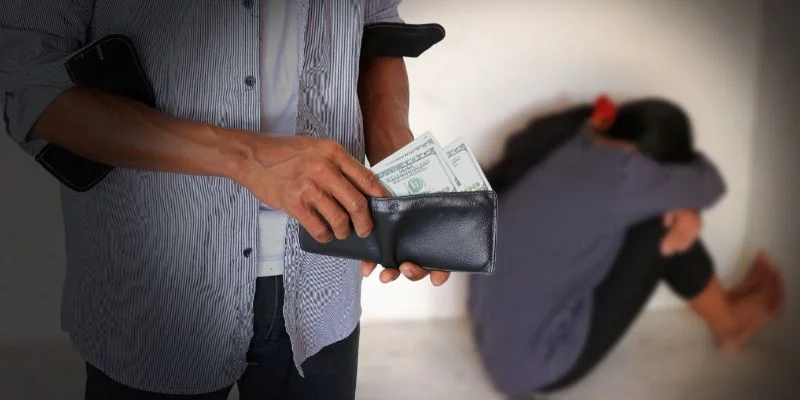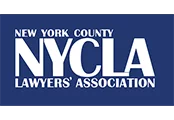Human trafficking is a significant issue around the world, as it harms and exploits many individuals. Human trafficking, which includes forced labor trafficking and sex trafficking, is a crime that can be difficult to track and identify. Penalties for trafficking are severe and frequently result from federal criminal charges. Unfortunately, not all cases and individuals engaging in trafficking are identified, investigated, and prosecuted.
The Trafficking Victims Protection Act (TVPA) of 2000 is a federal statute that addresses the crime and prevalent issue of human trafficking in the U.S. It determines an approach for managing human trafficking, which focuses on the prosecution of traffickers, the protection of victims, and the prevention of root causes of trafficking. The annual federal Trafficking in Persons report, which collects information and data from countries worldwide, is part of the effort to combat trafficking.

U.S. Human Trafficking Statistics
In the 2021 Trafficking in Persons Report on the United States, the following data about human trafficking cases and prosecution throughout 2020 was collected from federal law enforcement and other agencies:
- -The Department of Homeland Security (DHS) opened 947 human trafficking-related investigations.
- -The Department of Justice (DOJ) opened 663 human trafficking investigations, 619 of which were largely sex trafficking cases, 41 were labor trafficking, and 3 were both.
- -The DOJ began 210 federal prosecution cases for human trafficking and charged 337 individuals.
- -Of the DOJ’s 210 prosecutions, 195 were largely regarding sex trafficking, and 15 were labor trafficking.
- -The DOJ convicted 309 traffickers, with 297 of the cases being sex trafficking and 12 being labor trafficking.
- -The Department of State investigated 95 worldwide cases of human trafficking.
- -The Department of Defense (DoD) reported 160 investigations of human trafficking cases involving personnel in their agency, 55 of which were referred to criminal investigators.
- -Of the 160 investigations by the DoD, 112 concerned forced labor.
These cases are all trafficking cases, but they include cases that were convicted and prosecuted under both trafficking and non-trafficking criminal laws.
Canada Human Trafficking Statistics
The 2024 Trafficking in Persons Report on Canada concerns human trafficking prosecution data from 2021 to 2024. This includes:
- -Canadian police forces, provincial and municipal, reported 552 human trafficking-related investigations, which resulted in 251 individuals being charged throughout 2021.
- -Immigration, Refugees and Citizenship Canada (IRCC) handled 21 large investigations regarding human trafficking allegations in immigration and refugee cases throughout 2022.
- -The Royal Canadian Mounted Police (RCMP) began investigations into 72 cases between April and November 2022.
- -Employment and Social Development Canada (ESDC) noted and referred 150 potential cases of forced labor between April and November 2022.
- -Federal, provincial, and municipal authorities prosecuted 245 cases related to human trafficking, and convicted 100 traffickers, throughout 2021.
Governmental data regarding prosecutions and convictions is partial, and there is no comprehensive data published.
What Does the TVPA Tier 1 Ranking Mean?
Both the U.S. and Canada are countries placed at Tier 1 under the guidelines of the TVPA. A country’s tier placement refers to a government’s efforts to address human trafficking. It doesn’t mean that trafficking numbers are low or that the country’s government is doing all it can to address trafficking. It only means that the country is meeting the minimum standards outlined in the TVPA to continually address and work to eliminate the human trafficking problem.
FAQs
Q: How Many People Are Trafficked Across the U.S. Border Each Year?
A: There are no exact and complete statistics covering human trafficking cases over the U.S. border, as the crime happens underground and can be hard to discover and prosecute.
According to the 2021 Trafficking in Persons Report, in 2020, the Department of Homeland Security opened 947 investigations that were related to human trafficking, and the Department of Justice formally opened 663 investigations and convicted 309 cases of trafficking. This is a low estimate of the human trafficking cases in the U.S., as not all cases of human trafficking are reported and investigated.
The National Human Trafficking Hotline reported 50,123 signals of reports of human trafficking in the U.S. However, the hotline has no way to determine the validity of these reports, and this is likely a high estimate.
Q: Is the U.S.-Canada Border Monitored?
A: Yes, the U.S.-Canada border is monitored. However, although both countries secure their points of entry and monitor the rest of their border, it is the largest border between countries in the world. Border security doesn’t prevent all cases of illegal immigration or human trafficking but instead works to limit them.
Q: What Is the Difference Between Human Trafficking and Immigrant Smuggling?
A: Human trafficking is the exploitative movement of individuals through states and countries, done for financial gain. The individuals being trafficked are moved and exploited under coercion, threat of force, or deception. Migrant smuggling, or illegal immigration, is typically the voluntary movement of individuals across borders, and it doesn’t involve the exploitation and abuse of individuals like human trafficking. Both immigrant smuggling and human trafficking are illegal. The penalties for human trafficking are typically harsher, and the legal blame is solely on the trafficker.
Q: What Are the Red Flags of Human Trafficking?
A: Red flags indicating that someone may become a victim of human trafficking include:
- -An employer who won’t provide employees with contracts or provides them contracts in a language employees can’t read
- -Receiving extreme gifts and/or money in an imbalanced and quickly-moving relationship
- -A to-good-to-be-true job opportunity
- -Recruitment for a job or other opportunity that requires a far move, with few specifics or details
If someone is currently a victim of human trafficking, you may be able to notice certain signs:
- -They may feel that they cannot leave their work due to pressure or lack of control.
- -They may be physically or emotionally isolated, overseen by a controlling manager or coworker.
- -They may be required to work under threat of deportation.
Contact the Law Offices of Robert Tsigler, PLLC
At the Law Offices of Robert Tsigler, PLLC, we believe that everyone has the right to respect and dignity. For this reason, we protect the rights of victims of human trafficking, and we represent those who are accused of human trafficking crimes. Our attorneys understand how serious these cases and their consequences are. We work to provide effective criminal defense, and our team understands the federal and state laws that apply to trafficking cases. Contact our firm today.



















